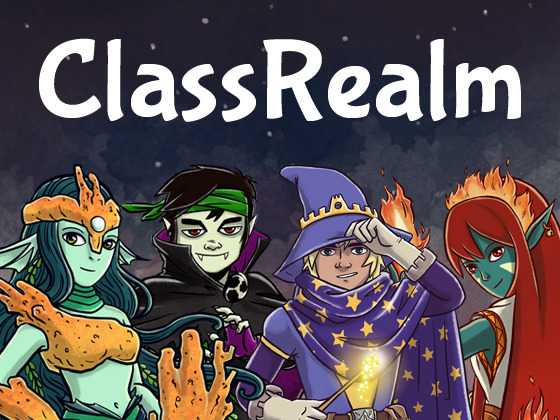Classrealm is an idea for a learning management system (LMS) unlike any I have seen. It’s a struggling idea (failed its kickstart fundraiser), but worth thinking about. The LMS itself will be nothing new. But layered over the LMS nuts and bolts will be a Tolkienesque fantasy world. Students have a hero persona that advances a la video game style as the student completes assignments. The fantasy component is meant to motivate students to learn the standard state/local curriculum. Gamification, as Classrealm’s creator suggests, is a way to motivate students to complete otherwise unappealing tasks.
My take is that Classrealm is more of a different way of grading than a different way of learning. Instead of a grade point average, you have a hero persona with health a la a video game. Assignments are linked to quests and so on. My first impression is that Classrealm will only function as a crutch to help a curriculum that students do not find interesting. Nevertheless, it may very well find success in reaching students who would otherwise fall behind their classmates.
I see great potential in using games for learning and development in every part of society, but they have to be designed from the ground up. I think that the real sea change in using games to teach will occur when professional game designers with a serious budget (think Sony or Nintendo) are presented with the task of creating games to teach the content.
Sept 30 update: I started a Gamification course created by Keven Werbach at UPenn delivered through Coursera. Apparently, the field is moving more quickly than I thought. I found two up and running gamification services: Bunchball and Chore Wars, but there are more out there. Very similar to ClassRealm, both reward users for tasks completed outside the game. Chorewars is free/cheap and aimed at home users or cubicle workers who are tired of cleaning up others’ break room messes while Bunchball looks like a more serious business venture for more serious subscription rates. Personally, I would like to see some webisodes of a show about heavy users of Chore Wars in the same vein of humor as The Guild or The Office.

